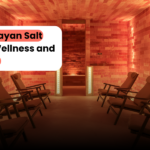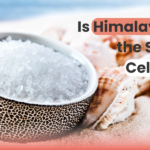Salt has been an essential component in human diets for centuries, playing a critical role in flavoring and preserving food. Despite its ubiquitous presence in kitchens around the world, there remains some confusion about whether salt is considered a spice.
In this article, we’ll delve into the unique role of salt in cooking, explore its classification, and compare it to other seasonings and spices. We’ll also look at the various functions of salt in food preparation and preservation.
The Importance of Salt in Cooking
1.1. What is Salt?
Salt, chemically known as sodium chloride (NaCl), is a mineral composed of sodium and chloride ions. It is naturally occurring and can be harvested from seawater or mined from rock salt deposits. Salt is essential for human health, aiding in nerve function, muscle contraction, and fluid balance. In culinary contexts, salt is prized for its ability to enhance flavors, preserve food, and improve texture.
1.2. Why Is Salt Important?
Salt’s significance extends beyond its basic health benefits. In cooking, salt serves multiple purposes:
- Flavor Enhancement: Salt amplifies the natural flavors of food, making them more vibrant and appealing.
- Preservation: Salt inhibits the growth of bacteria, allowing food to be stored for longer periods without spoiling.
- Texture Improvement: Salt can affect the texture of foods, such as making meats juicier and improving the crust of baked goods.
- Nutrient Source: Salt provides essential minerals that are vital for bodily functions.

Is Salt a Spice?
2.1. What Are Spices?
Spices are aromatic substances derived from seeds, fruits, roots, bark, or other parts of plants. They are used in cooking to flavor, color, and preserve food. Common examples of spices include cinnamon, cloves, ginger, and pepper. Spices often contain essential oils that impart distinctive aromas and flavors to dishes.
2.2. Is Salt Considered a Spice?
Salt is not considered a spice. Unlike spices, which are derived from plants, salt is a mineral. The primary purpose of salt in cooking is to enhance flavors, whereas spices contribute unique tastes and aromas to food. Despite this distinction, salt often works in tandem with spices to create well-rounded and flavorful dishes.
2.3. Difference Between Salt and Spices
The main differences between salt and spices are:
- Origin: Salt is a mineral, while spices are plant-derived.
- Function: Salt primarily enhances flavor and preserves food; spices add distinct flavors and aromas.
- Nutritional Content: Salt provides essential minerals like sodium and chloride, whereas spices offer various health benefits and nutrients, such as antioxidants and vitamins.
Functions of Salt in Food
3.1. Enhances Texture
Salt plays a crucial role in improving the texture of certain foods. For example, when used in baking, salt strengthens the gluten network in dough, resulting in better crumb structure and crust formation. In meat preparation, salt helps retain moisture, making the meat juicier and more tender.
3.2. Preserves Food
One of the oldest uses of salt is food preservation. By drawing out moisture, salt creates an environment that is inhospitable to bacteria, yeast, and molds, thereby preventing spoilage. Common preserved foods include salted fish, cured meats, and pickled vegetables.
3.3. Enhances Flavor
Salt is a powerful flavor enhancer. It can balance sweetness, suppress bitterness, and make savory flavors more pronounced. This makes it an indispensable ingredient in both savory and sweet dishes. Chefs often use salt to fine-tune the taste of their creations, ensuring a perfect balance of flavors.
3.4. Nutritionally Essential
Salt is essential for maintaining the body’s electrolyte balance. Sodium, a key component of salt, is necessary for proper nerve function, muscle contraction, and fluid regulation. While excessive salt intake can lead to health issues, moderate consumption is vital for overall health.
Salt vs. Other Seasonings
4.1. What is a Seasoning?
Seasonings are ingredients used to enhance the flavor of food. They include herbs, spices, salts, and other flavorings like vinegar and soy sauce. Seasonings can be used alone or in combination to achieve the desired taste profile.
4.2. What is a Condiment?
Condiments are substances added to food after cooking to enhance its flavor. Common condiments include ketchup, mustard, soy sauce, and mayonnaise. Unlike seasonings, which are used during cooking, condiments are typically served alongside the finished dish.
Salt Is Not a Spice
5.1. Classification of Salt
Salt is classified as a seasoning rather than a spice. Its primary role is to enhance the natural flavors of food, making it an integral part of culinary practices worldwide. While it shares some functions with spices, such as flavor enhancement and preservation, its mineral origin sets it apart.
5.2. Unique Properties of Salt
Salt’s unique properties, such as its ability to enhance flavor and preserve food, make it a versatile and indispensable ingredient in the kitchen. Its mineral content also provides essential nutrients that support bodily functions, further distinguishing it from spices.
Practical Uses of Salt in Cooking
6.1. Balancing Flavors
Salt is used to balance and enhance flavors in a dish. It can bring out the natural sweetness in ingredients and counteract bitterness, making the overall taste more appealing.
6.2. Improving Texture
In baking, salt helps to strengthen the gluten network, providing structure to bread and pastries. In meats, salt helps to retain moisture, resulting in juicier and more flavorful dishes.
6.3. Preservation Techniques
Salt has been used for centuries as a preservative. Techniques like salting, brining, and curing help to extend the shelf life of foods, making them safe to consume over longer periods.

Conclusion
In conclusion, while salt is not considered a spice, it plays an essential and unique role in cooking. Its ability to enhance flavor, preserve food, and improve texture makes it an invaluable ingredient in the kitchen. Understanding the difference between salt and spices can help you make better culinary choices and appreciate the distinct functions they serve.
Whether you are seasoning a dish, preserving food, or enhancing texture, salt remains a fundamental component of cooking that goes beyond mere flavoring. By recognizing its unique properties and uses, you can elevate your culinary skills and create dishes that are not only delicious but also nutritionally beneficial.
Frequently Asked Questions
Q: Is salt necessary for cooking?
A: Yes, salt is essential in cooking for enhancing flavors, preserving food, and improving texture. It also provides necessary minerals for bodily functions.
Q: Can I use salt as a substitute for spices?
A: Salt and spices serve different purposes. While salt enhances and balances flavors, spices add distinct tastes and aromas. They should be used together for the best culinary results.
Q: How much salt should I use in cooking?
A: The amount of salt used in cooking varies depending on the dish and personal preference. It’s best to start with a small amount and adjust to taste.
Q: Are there different types of salt for cooking?
A: Yes, there are various types of salt, including table salt, sea salt, kosher salt, and Himalayan pink salt. Each type has unique properties and uses in cooking.
Q: Can excessive salt intake be harmful?
A: Yes, excessive salt intake can lead to health issues like high blood pressure and heart disease. It’s important to use salt in moderation and consult with a healthcare professional if you have dietary concerns.














